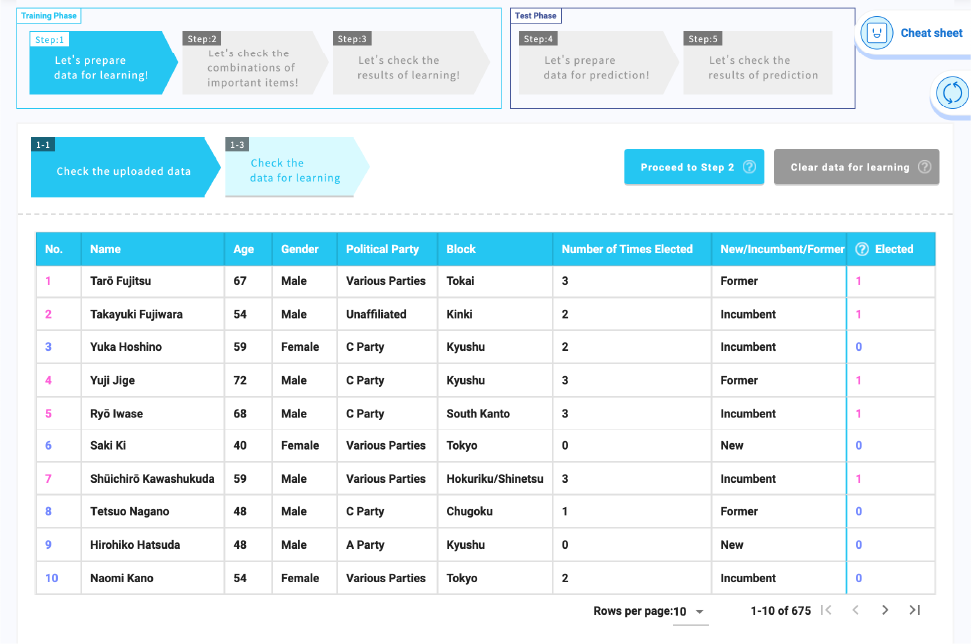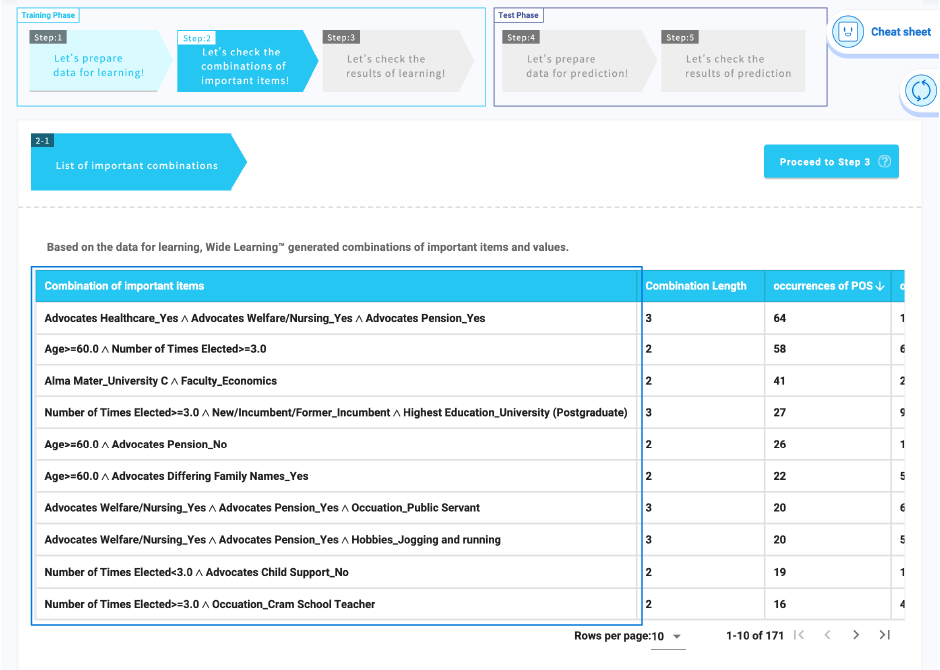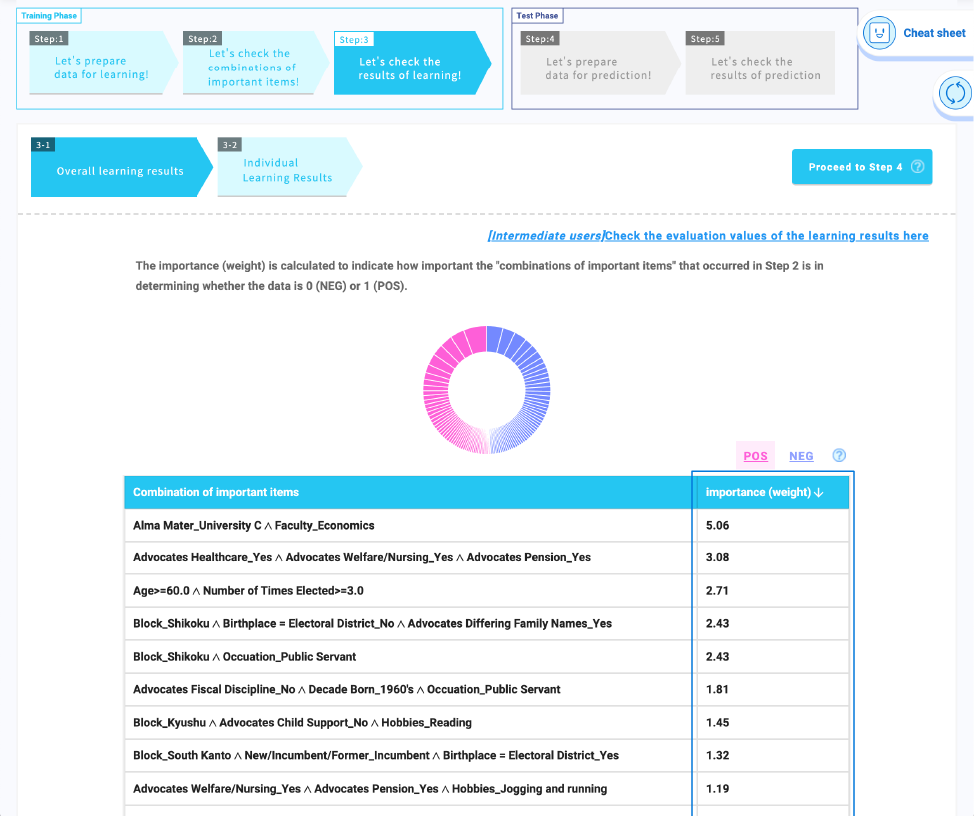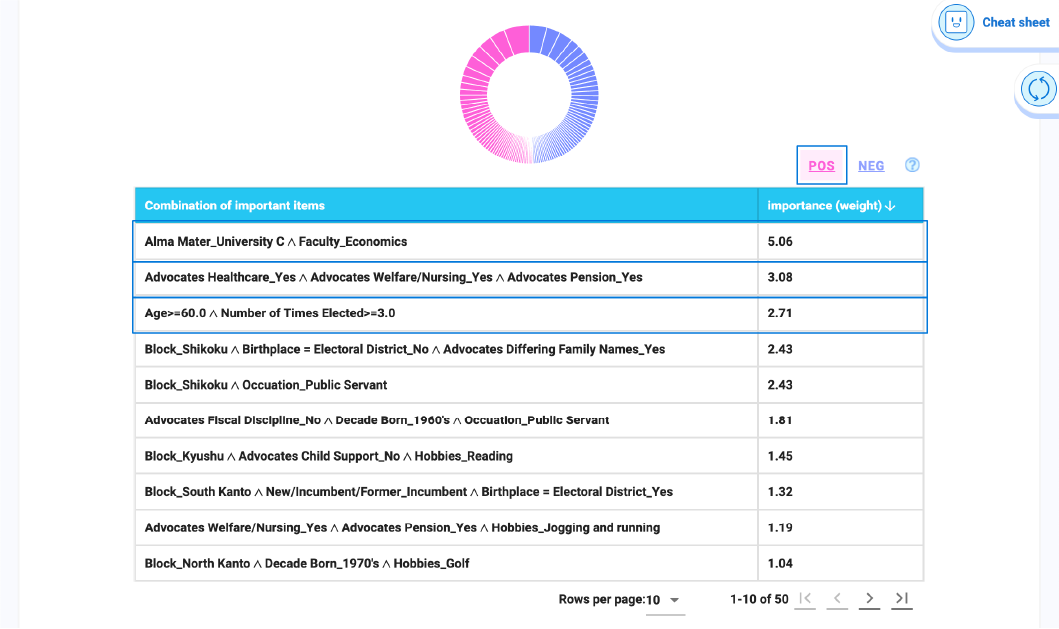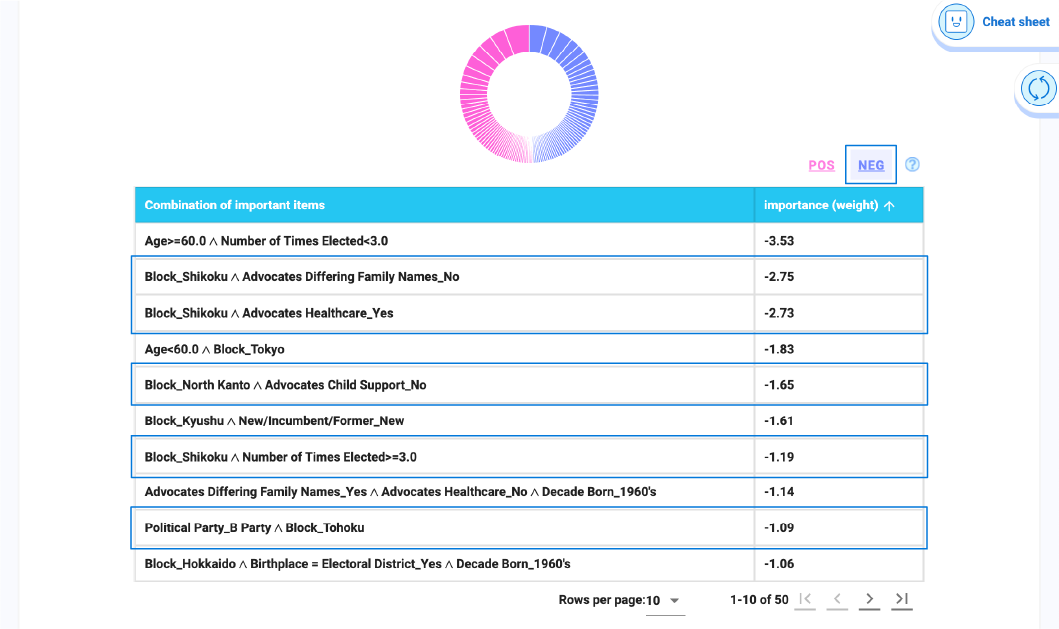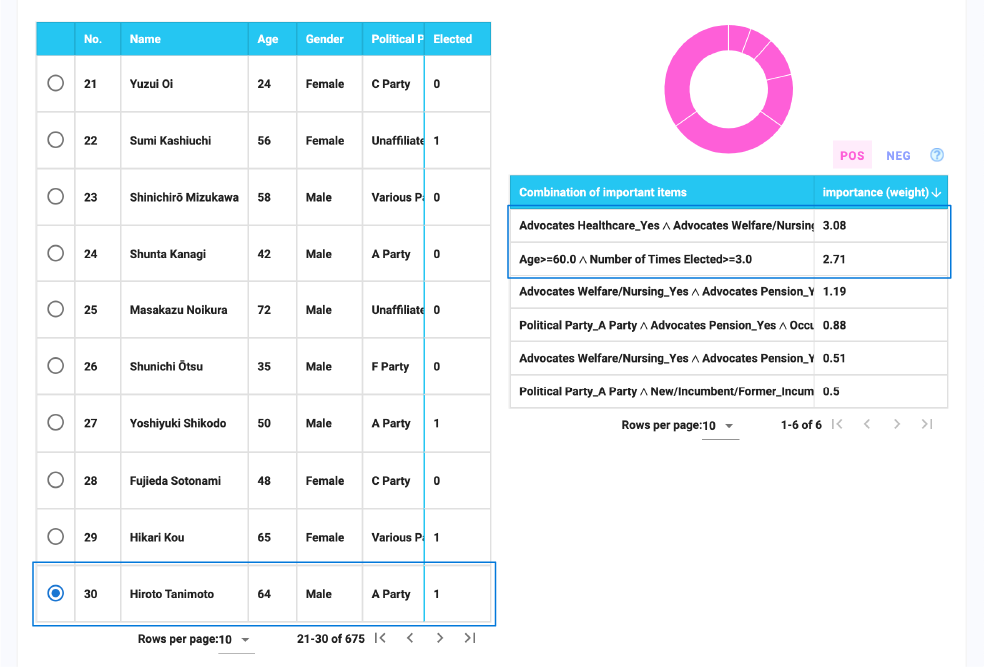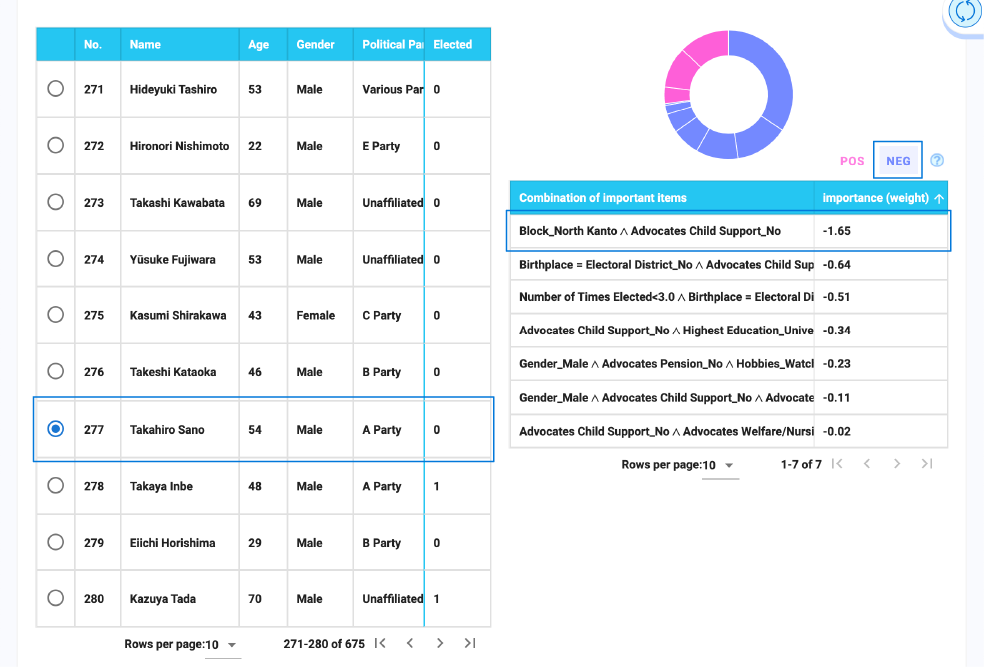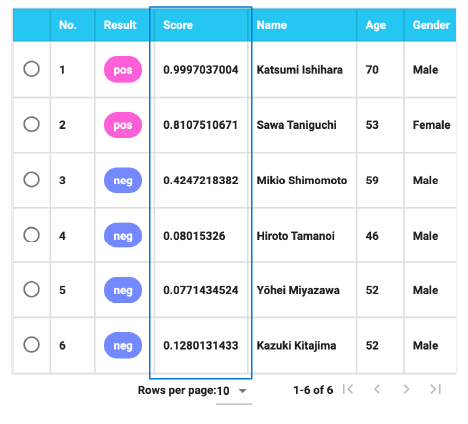Striving to Discover Electoral Factors
Let’s Use the Trial Tool!
In the case of mammals, we were able to identify mammals by learning about animal information.
Now let's look at the factors that lead to victory in elections.
What Are the Features of Winners?
What are the features of the candidates who win or lose elections?
- What political party do they belong to?
- Are they an incumbent or a new candidate?
- Are they a young person or a heavyweight?
- What kind of policies do they advocate?
and so on.
Also, in elections, which parties are strongly supported differs depending on the region, or block. It is difficult to determine the important factors for winning by considering each combination.
Wide Learning™ makes it easy to find combinations of features that are useful in winning elections from past election results.
By understanding the combinations of these features, you can see what criteria voters use to decide who they vote for, and candidates can see what voters want.
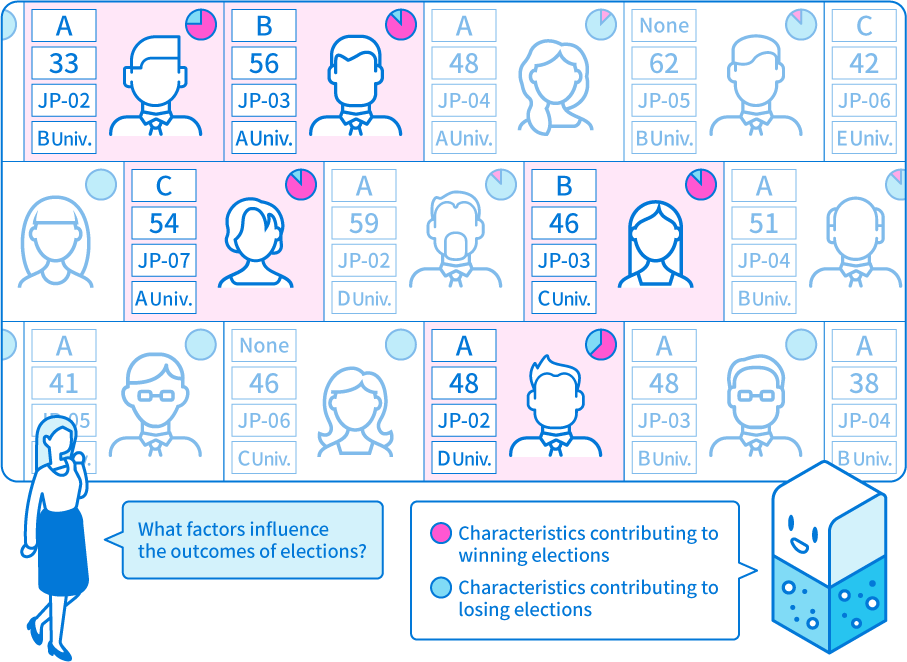
Data Used in this Case Study
Using the data created for this demonstration, let's find out the features of the winners in the Wide Learning™ Trial Tool.
In order to use the Wide Learning™ Trial Tool to predict the outcome of an election, the following two data sets are necessary. Please download the linked files and use them.
The characters, organizations, names, etc. that are used here are fictitious and have nothing to do with actual entities.
Election Case Study - Data for learning: Data for Wide Learning™ to learn from (election_train.csv)
Election Case Study - Data for prediction: Data for Wide Learning™ to use for prediction (election_test.csv)
The data for learning contains various information in the form of a table, including that of 219 winners and 456 losers in a fictitious election, for a total of 675 people. If the solution label, which is the "Elected" column, is 1, it means that person was elected, and if it is 0, it means that person lost.
For example, the first line of the data for learning contains the following information about Taro Fujitsu.
| Name | Taro Fujitsu | Age | 67 | |
|---|---|---|---|---|
| Gender | Male | Political Party | Various Parties | |
| Block | Tokai | Number of Times Elected | 3 | |
| New/Incumbent/Former | Former | Birthplace = Electoral District | No |
The detailed content of the study data can be found in the "1 -3. Check the data for learning" section of the Wide Learning™ Trial Tool.

